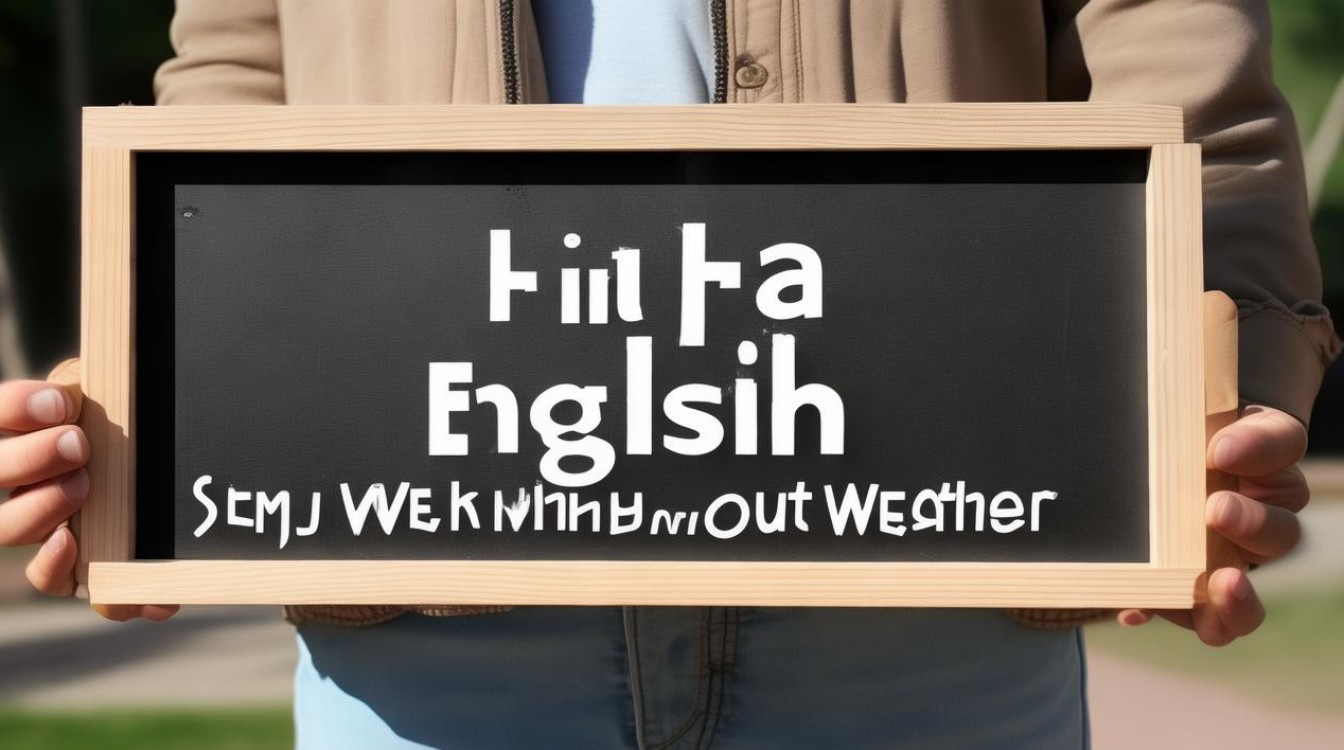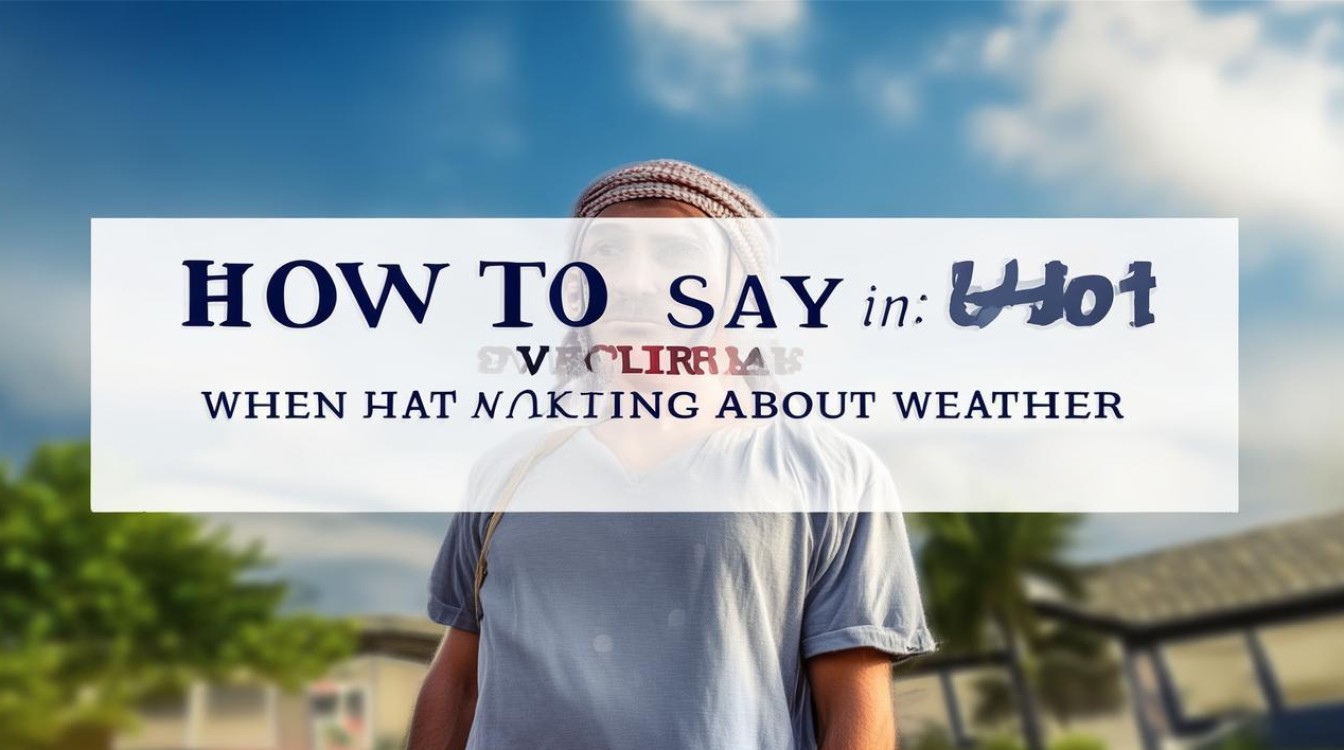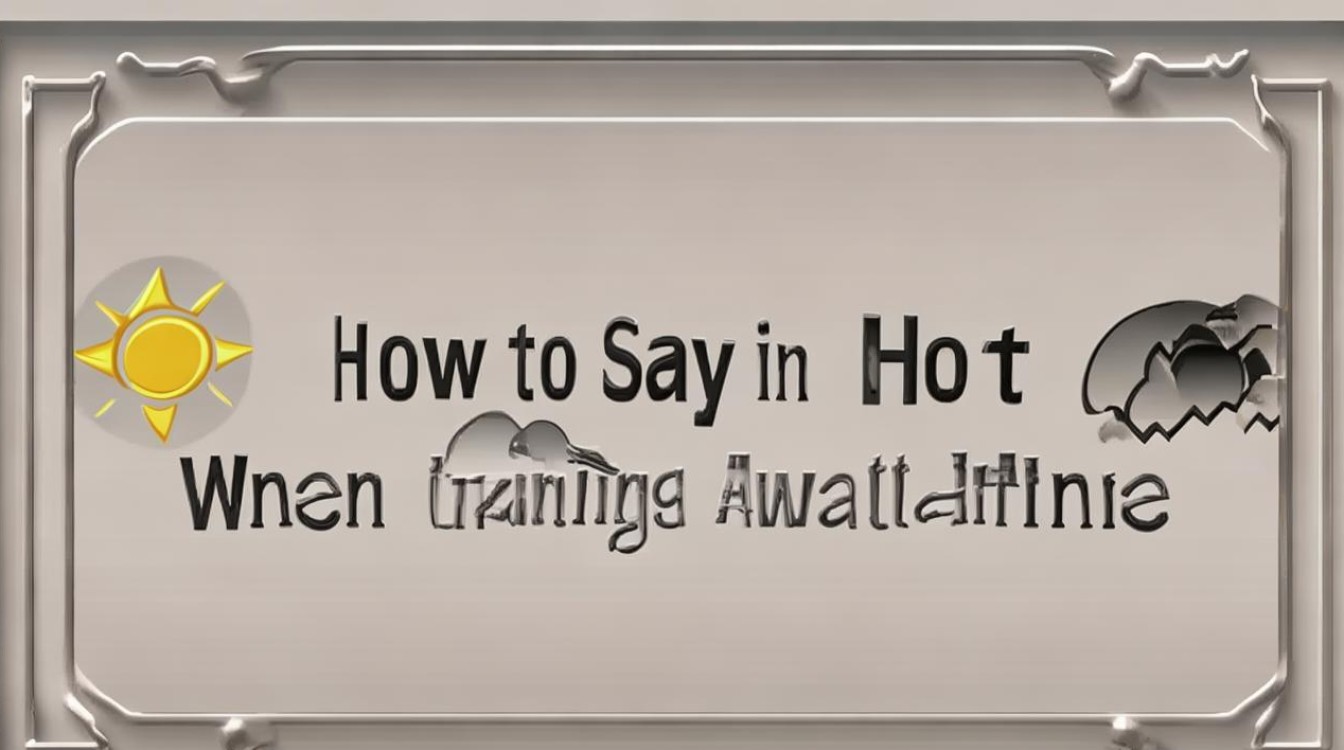When discussing weather in English, the word "hot" is just the beginning. Depending on the intensity, context, and even regional dialects, there are many ways to describe high temperatures. Whether you're learning English or just curious about weather vocabulary, this guide will help you express "hot" more naturally and accurately.

Basic Ways to Say "Hot" in English
-
Hot – The most straightforward term.
- Example: Today is really hot.
-
Warm – A milder version of "hot," often pleasant.
- Example: The mornings are warm, but evenings get cooler.
-
Scorching – Extremely hot, often uncomfortably so.
- Example: The desert is scorching at noon.
-
Boiling – Informal, emphasizes unbearable heat.

- Example: It’s boiling outside; I need a cold drink.
-
Sweltering – Humid, oppressive heat.
- Example: The subway is sweltering in summer.
-
Sizzling – Suggests intense heat, like frying food.
- Example: The pavement is sizzling under the sun.
-
Blazing – Very hot, often with bright sunlight.
- Example: We hiked under a blazing sun.
-
Roasting – Similar to "boiling," but drier.

- Example: The car was roasting after sitting in the sun.
Regional and Slang Expressions
Different English-speaking regions have unique ways to describe heat:
- UK/Australia: "It’s baking today!"
- US (Southern): "It’s hotter than a jalapeño!"
- Informal/Casual: "It’s like an oven out there!"
Scientific and Formal Terms
If you're writing a weather report or academic content, consider these terms:
- High temperatures – Neutral, factual.
- Heatwave – A prolonged period of excessive heat.
- Thermal discomfort – Technical term for uncomfortable heat.
How to Use These Words Naturally
- Casual conversation: "Man, it’s scorching today!"
- Weather forecasts: "Expect sweltering conditions this weekend."
- Travel blogs: "Avoid midday hikes—the desert is blazing hot."
Common Mistakes to Avoid
- Overusing "hot" without variation.
- Misusing slang (e.g., saying "boiling" in a formal report).
- Ignoring humidity (e.g., "sweltering" vs. "dry heat").
Why Vocabulary Matters
Precise language helps convey the exact feeling of the weather. Saying "It’s sweltering" paints a clearer picture than just "It’s hot." Whether you're chatting with friends or writing a travel guide, choosing the right word makes your communication more vivid.
So next time the temperature rises, try swapping "hot" for something more expressive. Your conversations—and your readers—will thank you.



